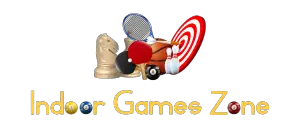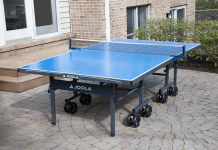Ah, backgammon. It seems like most people I talk to fall in to two camps when it comes to this game. Either you don’t know the first thing about backgammon (or backgammon strategy), or you think it’s one of the only pure board games still being played. There doesn’t seem to be many people in the middle. And when you know a little about the history of the game that makes a lot of sense.
Contrary to popular belief, backgammon is not the oldest board game in the world. In fact, backgammon as we know it now is “only” about 400 years old. This actually isn’t very old when you realize that a lot of people think that it’s nearly 5,000 years old. The game can trace its lineage that far back, almost like a family tree. A board similar to a backgammon board, along with a collection of game pieces, was discovered in Iran dating to around 3000 B.C. Similar game sets were discovered all around Persia, the Indian subcontinent, and the Middle East starting a few hundred years after that. Around 700 A.D. these table games made their way to Europe, and finally to the Far East around 400 years later.
The first mention of the game of the name “backgammon” came from Europe in the 17th century. And then finally by sometime in the early 19th century the rules that we would recognize today were in place. So sure, the game may be old by the standards of a lot of games written about on this site (Catan, or Settlers of Catan for the purists in the crowd, was first released in 1995!). But compared to a lot of the classics like chess and even checkers, backgammon as we know it today is a relatively young game.
Table of Contents
Why I Love Backgammon
I was introduced to it, like many people my age, by my grandfather. He had a few passions in his life, and backgammon was certainly one of them. He didn’t have much to teach me in the way of backgammon strategy. I still find that odd considering how much he loved the game. The running game, which we’ll talk about later in this article, is all that he really knew.
His lack of strategy aside, I can’t tell you how many hours he spent teaching me how to play the game. I can think of an entire vacation to Colorado where he and I barely went outside because he was busy teaching me the ins-and-outs of the game. He’s 94 years old so doesn’t play much anymore. But all of those hours spent playing the game with him makes it a very special game to me.
Most people I know don’t play so I don’t have the chance to play much anymore, sadly. That doesn’t mean I don’t still have my best tactics on lock, though. Even though my grandfather didn’t know a lot of strategy to teach me, I spent a lot of time learning from some pretty great players in some clubs in my city. I can’t wait to share with you what I’ve learned!
A Few Definitions
More than many games, backgammon has its own lingo. You may not have heard many of the terms even if you’ve played mostly home games against friends or family. Most of these terms only come up in club games or in articles like these. But I’ll be using a lot of these terms, so it may help to know some of them.
- Point: One of the spaces on the board.
- Blot: A checker left alone on a point. These are the checkers that you can land on and set back.
- Set back: When you “capture” one of your opponent’s checkers.
- The bar: The middle of the game board. This is where “set back” checkers go.
- Home board: The area of the board that you are trying to move your checkers to. These are the last 6 points before you get to the end of the board.
- Bear off: Once all of your checkers are on your home board, you can begin rolling to move them off of the board, or “bear off” your checkers.
Tactics That Apply To Every Backgammon Strategy
I’m going to break this up in to two sections – tactics that apply to every different game style you may choose to play, and then the different styles you can choose from. It’s helpful to know all of this info because you can then choose different game styles at different times. Also, depending on how the game goes, you may have to choose to change your strategy. Knowing about all of these tactics will help you be flexible while you play.
1. Tactic One: Minimize Your Blots
The most important piece of advise that I can give you is to try to minimize the number of blots that you leave on the board. “Blots” are the checkers that you leave on a point by themselves. These blots can be sent back by your opponent, forcing that checker to start over from the beginning of the board. Leaving too many blots will give your opponent many chances to send you back. Obviously this will slow you down greatly.
This is most true if the blots you leave are on your home board. That is the side of the board that you are trying to move towards. If your checkers on your home board are sent back they have much farther to travel to get back to where they started. If you must leave blots, try to make them checkers that are farther away from your home board. That way they won’t have to travel far to get back to where they were.
Sometimes of course, blots are necessary. That’s just the nature of the die rolls. You cannot make stacks every single time. Sometimes a blot is even a good play, such as when you send back one of your opponent’s checkers. But any solid backgammon strategy will tell you to minimize these blots when possible.
2. Tactic Two: Watch Your Opponent
To be able to know which if your strategies you should employ, you really need to know how your opponent is playing. Pay attention to whether your opponent is leaving a lot of blots. Whether they’re moving their back checkers, or the ones closer to their home board. Whether they’re priming (more on that later) or whether they’re leaving you space to move. All of these pieces of information can help you decide the best strategy to use.
But remember: just because they start with one strategy doesn’t mean they’ll stick with it. A good player will change up their strategy if their opponent is having success. Be aware of your opponent suddenly doing things differently. If they change strategies, that may require you to do the same.
3. Tactic Three: Don’t Waste Your Rolls
No matter which strategy you use, make sure that you use your rolls to the maximum efficiency. Just because you roll a 4-3 doesn’t mean that every move you make with that roll is the most efficient possible. You have to look at the entire board and make sure that you find the move that best fits with your overall strategy.
This also applies to the end game, especially when you’re already on your home board and ready to bear off. A lot of people will tell you to prioritize moving your checkers that are on the 5 or 6 point instead of bearing off your closer checkers if you roll a lower number. I say that’s bollocks. Bear off any checkers that are on any points that you roll for. That always gets you closer to a victory.
Example
Let’s say that you’re playing a priming game (again, more on that below). If you get a roll that sets you up perfectly to block a nearby point, but instead you choose to run forward some of your rear checkers, that’s a waste of your roll. Sure, it may look good to get some of your checkers moving towards your home board, but going halfway on your strategy makes your strategy a losing one.
The Five Most Common Backgammon Strategies
The tactics I listed above apply to all of these strategies. But to be a great player you need to apply each of those tactics to one (or more!) of the strategies below. Each of the strategies has pros and cons, of course. But mastering at least one of them will help you on your way to victory.
1. Backgammon Strategy One: The Running Game
This is the most basic backgammon strategy. that most beginners use without even realizing that they’re using a strategy at all. The running game involves moving your checkers to your home board and bearing them off as quickly as possible. Someone playing a true running game doesn’t necessarily worry about playing defense or leaving blots on the board. This strategy treats backgammon as a pure race.
Pros
First, this game goes by quickly. A true running game, where both players are playing this strategy, goes by very quickly. This strategy certainly doesn’t turn in to a Monopoly-like stand off.
Second, you don’t have to be an expert at all to play this strategy. Everything in a running game is pretty straight-forward. If for some reason none of your strategies are working, or if your brain shuts down and you can’t remember any of the other strategies, this one is a pretty basic way to play.
Cons
The biggest issue with this strategy is that there really isn’t much strategy to it. This strategy is almost completely dependent on the roll of the dice and not based on your intelligence. You don’t really learn much about playing the game this way. You can win sometimes, but you’ll also be frustrated often.
The other big issue with this strategy is that you don’t really control the results. If you aren’t rolling big numbers, you lose. If you’re rolling mostly 5s and 6s, you win. That’s it. Most of us like board games because we can control the results, for better or worse. We enjoy strategically playing the game, learning, and getting better at the game. This strategy doesn’t lead to that.
Until you really get the hang of one of the other strategies, you’ll be playing the running game. And that’s okay, because at least you’re playing.
2. Backgammon Strategy Two: The Blitz
If there is anything else that most beginning players add to their strategy besides just playing a running game, it’s the blitz. Playing a blitz game means to land on your opponents blots whenever the opportunity presents itself. And I mean almost every single time.
The goal of the blitz strategy is to keep your opponent on the bar as much as possible. If your opponent has checkers on the bar, that means that they can’t move their other checkers around the board. You’re basically trying to keep your opponent at a standstill for as long as possible while you get your pieces in place to bear off.
Remember that if your opponent is stuck on the bar, they have to roll the right numbers to get back on to the board. So the key to a really, really effective blitz strategy is to also block off as many points as you can on your home board. This makes it really difficult for your opponent to get back on the board, which freezes them even longer.
Pros
The biggest benefit to this strategy is the ability to minimize your opponent’s progress. If they’re stuck on the bar, they can’t move forward at all. Or if you can set back one of their checkers that’s in (or near) their home board, you’ll be setting your opponent back a lot of pips.
Another underrated positive aspect of this strategy is the effect it has on your opponent mentally. Getting your checkers set back is incredibly frustrating. If you can frustrate your opponent by setting back many of their checkers it could cause them to make a lot of mistakes later in the game. A frustrated opponent is one that is much easier to beat.
Cons
It can be very hard to set back your opponent without leaving blots of your own. This is dependent upon your rolls, of course. But a true blitz game prioritizes setting back your opponent, whether or not you leave blots or not. So a hardcore blitzer opens themselves up to getting set back pretty often too. This can lead to a very frustrating, very long game.
3. Backgammon Strategy Three: The Holding Game
The main focus of the holding game is keeping an anchor point on your opponent’s side of the board, especially in their home board. Usually you don’t want to leave your checkers in a position to be trapped. This strategy can leave you opened to getting primed (I swear we’re getting to that). But there are definitely some good reasons to leave an anchor point in your opponent’s home board.
First, it leaves you in maximum position to be able to set back your opponent’s checkers. If you have an anchor point deep in your opponent’s home board it makes it harder for your opponent to pass you. That means that whenever they leave a blot you’ll be in great position to capitalize on it.
Second, that anchor makes it more difficult for your opponent to get in position to bear off. At worst, it at least slows them down. Give your opponent an open home board and nothing stops them from moving into the best position that they can. If you have an anchor point (or two) in your opponent’s home board they may have to waste a few rolls while trying to get in position to bear off.
Third, it gives you a point that you’ll always have in case your opponent sends one of your checkers to the bar. If your opponent has all of the points in their home board blocked (it’s possible), then you absolutely cannot play until they start bearing off. But if you leave an anchor, that assures that your opponent can’t block you on to the bar. It can literally save your game.
Lastly is another psychological benefit. If you leave an anchor point, it leaves something for your opponent to have to worry about. They may be worried about leaving blots that you could set back. And if that’s their primary concern, they won’t be making the best moves to set up for bearing off. Your anchor, even while it’s not moving, is playing great defense against your opponent.
4. Backgammon Strategy Four: The Back Game
This is, in a way, a variant of the holding game. The back game takes the holding game a step further and has you keep two or more anchor points deep in your opponent’s territory. All of the benefits to the holding game are the same here in the back game, but multiplied.
While the holding game leaves you in great position to set back your opponent’s checkers, the back game gives you an even better chance of setting them back. Not only because you have more checkers, but because you hold more points. This gives you more points that you can hit if your opponent leaves a blot.
The holding game makes it hard for your opponent to set up for bearing off, but the back game makes it even harder because, again, you control more points in the opponent’s home board. They may have to waste multiple turns getting the right rolls to get all of their checkers in the home board. This may force them to leave blots that you can take advantage of.
Sure, the holding game stops your opponent from being able to block off their entire home board, making sure that you’ll be able to get off of the bar. But the back game gives you at least double the number of points that your opponent can’t block.
But what really differentiates the back game from the holding game is that the holding game is a decision you can make at the beginning of the game. You start the game with one anchor in your opponent’s home board and the holding game just has you hold that anchor and leave it alone. But because you start the game with only one anchor, and the back game has you holding at least two anchors in their home board, that means that you have to be getting set back in order to get another anchor set. So really, the back game is just a way to save a game that’s not going well. It’s your opportunity to make the best of a bad situation.
5. Backgammon Strategy Five: The Priming Game
I saved the best for last (at least this is the strategy that I primarily use). I hope I’ve built it up enough in your mind.
The priming game involves making a connected series of points that you have blocked off. The best you can do is 6 points in a row blocked. If you can do this, that makes sure that your opponent cannot pass by your prime. They’ll be completely stuck behind your massive wall of checkers. If you can even get three or four in a row, you’ll be making your opponent’s life very difficult.
There are two main differences between the priming game, and the back/holding games. While there are some obvious similarities, the differences are important. First, the priming game doesn’t necessarily involve keeping points in your opponent’s home board. In fact, doing this in your opponent’s home board means you’ve been set back way too many times. The priming game can be done anywhere on the board. Second, this involves connected points on the board, creating the aforementioned “wall”. The holding/back games don’t necessarily involve having your anchors connected, while the entire point of the priming game is to have multiple connected points.
This is absolutely best done if you can create the prime in your own home board. Then if you can set back one of your opponent’s checkers, it makes it completely impossible for them to get off of the bar. They can’t move and you’ll have free reign to move all of your checkers in to position to bear off.
Backgammon Strategy Summary
For a game that is simple to learn to start playing, backgammon involves plenty of strategy to win consistently.
First it’s best to know some general tactics that apply no matter which backgammon strategy that you choose. Mostly you want to minimize your blots. Leaving too many blots gives your opponent too many chances to set back your checkers. You have to keep an eye on your opponent’s moves and see if you can tell which strategy they’re playing. That way you can counter it by adjusting your strategy. And lastly, don’t waste your rolls. Most of the strategies are created with a specific goal in mind so playing rolls that don’t fit the strategy can cause your game to fall apart.
Next, you should know the specific strategies that most players choose from. The most basic is the running game, which just has you move your checkers as quickly to your home board as possible. This makes the game go fast, but you’re at the mercy of the dice more so than with any other strategy.
The next most basic is the blitz, where your primary goal is to set back all of your opponent’s blots. This delays your opponent’s progress but usually causes you to leave blots of your own.
Then there’s the holding game, where you leave a single anchor on your opponent’s home board. It leaves you a lot of options, both offensively and defensively, but can leave you open to being trapped. Next is the back game. This is similar to the holding game, but with multiple anchors instead of just the one. Just as with the holding game, you can leave yourself open to getting trapped this way.
Last is the priming game, where you create a wall of blocked points. This really stalls your opponent’s progress and lets you set yourself up to bear off. In my mind the priming game is the best strategy, but you can use elements of all of them to win.
Putting these strategies to use should have you bearing off against your opponent frequently. Good luck!
Hunter is a stay-at-home dad to two fantastic young boys. He is a proud nerd of all kinds – he is still the only person in the history of his high school to be on the varsity football team and computer programming team at the same time. He loves to talk to anyone who will listen about sports (mainly baseball and football – go Astros, Saints, and Longhorns!), video games (ask him about his Legend of Zelda Triforce tattoo), board games, and cross-stitching. He lives in Austin, Texas but is a proud Cajun originally from Baton Rouge, Louisiana.

![Stiga XTR Pro Review | 1,559+ Global Ratings (In-Depth Guide) [year] Stiga XTR Pro Review](https://indoorgameszone.com/wp-content/uploads/2021/08/Stiga-XTR-Pro-Review-218x150.jpg)





